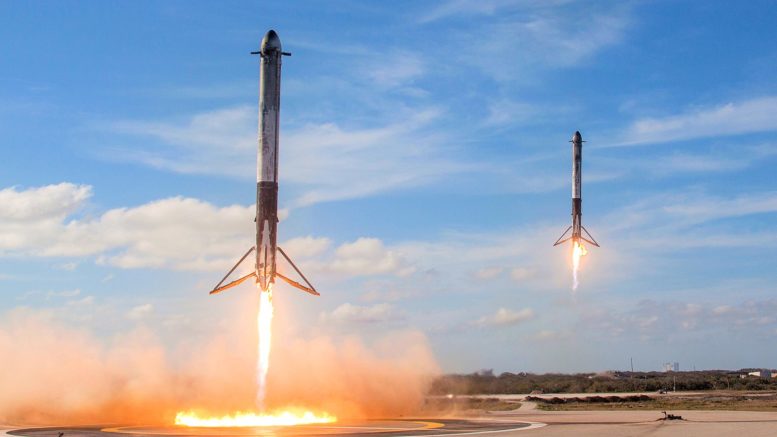The history of reusable rockets has been one that has evolved from a design on paper to now being a main driver in the new space economy. Having a reusable rocket allows companies to reduce cost, increase product readiness by reducing the time and material to prepare a rocket for launch, and can help provide other unseen benefits to the process of building rockets.
The idea of reusable rockets starts with the invention and implementation of rocket technology during the 20th century. During this time, rockets expanded from purely research as seen with Robert Goddard successfully launched his liquid fueled rocket on March 16, 1926, to one of practical use as the Germans did in World War 2 with their V-2 Rockets.
All throughout these development and initial implementation phases, there were many ideas for making the rocket technology reusable in some form. Sometimes this was impossible because in instances such as the V-2, the rockets were specifically designed to deliver a weapon. Weapons delivery systems are virtually impossible to reuse as the goal of the rocket is to deliver the weapon to the target, rather than get the payload into orbit.
In instances in which the idea of reusability was viable, the earliest rocket technology would be too heavy to be implemented. This would later be solved by utilizing multi-stage rockets instead of single stage rockets, which would then allow some of those stages to become reusable.
20th Century Advances
In the 20th century, the history of reusable rockets is closely tied with how rocket development is progressing. In the early part of the 20th century, before 1950’s, rockets development was in its infancy and rockets were either being tested or being used for developing weapons. It wasn’t until after World War 2 that agencies such as NASA started investigating the potential for reusability.
The first real reusable rocket project to get serious interest was the NASA Space Shuttle, which began in the 1960’s. The goal that NASA had in mind when developing and designing the space shuttle was to create a fully reusable spaceplane for use starting in the 1970s. During this design process, NASA discovered that the desired design of a total reusable rocket and space plane would be too expensive and complex to develop in the desired timeframe. Therefore NASA had to scale back the design, which meant that the NASA Space Shuttle would become operationally more expensive to operate over the course of the program than if an expendable launch system were deployed.
The only other reusable rocket that was developed was the USSR Buran!
Other US efforts for reusable rockets included the McDonnell Douglas Delta Clipper program, which saw the DC-X prototype demonstrated rapid turnaround time and automatic computer control. The 1990’s also saw British research re-examine an earlier design evolve into Skylon design, which still remains in development.
From the commercial side, Rocketplane Kistler and Rotary Rocket attempted to build reusable privately developed rockets before going bankrupt.
21st Century Advancements
Advancements in the 21st century began with the Ansari X Prize contest, which was intended to develop private suborbital reusable vehicles. The result of the contest was that the winner Scaled Composites was able to reach the Kármán line twice in a two-week period with their reusable SpaceShipOne.
2012 saw SpaceX start flight testing experimental vehicles, which would lead to the development of the Falcon 9 re-usable rocket launcher. To date, SpaceX has been the most visible and most experienced reusable rocket launcher in the world in regards to commercial flights.
On November 23rd, 2015 the New Shepard rocket became the first Vertical Take-Off/Landing sub-orbital rocket to reach space by passing the Kármán line before returning to a parachute landing.
On December 21st, 2015, SpaceX achieved the first vertical soft landing of a re-usable orbital rocket stage, during said mission which saw 11 Orbcomm OG-2 commercial satellites deployed into low Earth orbit.
The first Falcon 9 second flight occurred on 30 March 2017. As of this writing, SpaceX routinely recovers and reuses their first stages, with the future goal of reusing fairings. Currently, the only operational reusable orbital-class launch systems are the Falcon 9 and Falcon Heavy. SpaceX just completed their 50th launch and see many more successful reuses in the future.
The history of reusable rockets is definitely one that will continue to evolve and is actively being written! Come join us for this wonderful ride!

Be the first to comment on "The History Of Reusable Rockets"